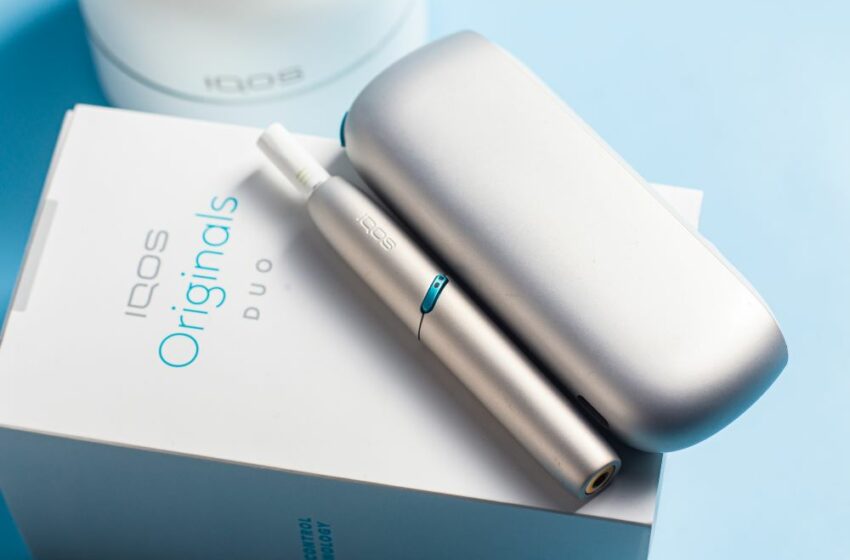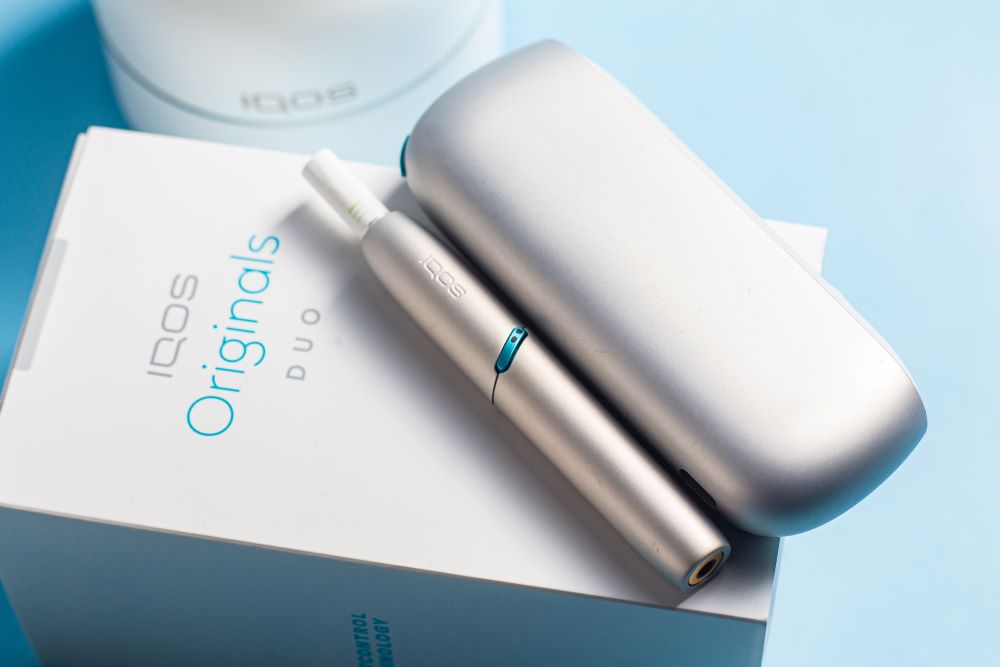The Invisible Advantage
- Also in TR Print Edition
- March 1, 2024
- 0
- 12 minutes read

IQOS joined the Tobacco 10 ranking in 2023, achieving a brand value of $3.25 billion—higher than combustible brands such as Chesterfield or Rothmans. Photo: elenavah

Intangible assets remain a major contributor to the real value generated by the tobacco industry.
By Stefanie Rossel
Brand value is a nonphysical asset but one of the most important issues for every brand owner. Brand valuations are used for several purposes such as tax calculation, finance and marketing. They function as interpreters between the language of marketers and finance teams and provide structure for both to work together to maximize returns. Measuring such intangible assets is complex—the most common metrics on which brand performance and thus brand equity can be judged include market penetration, frequency of purchase, repeat purchase, customer loyalty and the ability of a brand to command a price premium versus other brands in its sector.
In 2023, the global value of intangible assets owned by the world’s largest companies stood at $61.9 trillion in 2023, up from $57.3 trillion one year previously, according to the Global Intangible Finance Tracker (GIFT) report, which is published annually by Brand Finance, an independent, U.K.-based brand valuation and strategy consultancy.
While tech giants like Apple (with intangible assets of $2.7 trillion) and Microsoft ($2.3 trillion) continued to lead the pack in the 2023 analysis, last year’s most intangible sector in relative terms, with 91 percent of total enterprise value, was tobacco and e-cigarettes, as companies invested heavily in proprietary technology and patented intellectual property around vaping devices to drive growth, according to Brand Finance.
In the company’s Tobacco 10 ranking, Marlboro remained the undisputed leader with a brand value of $34.74 billion followed by Pall Mall ($6.54 billion) and L&M ($6.35 billion). The list is dominated by combustible brands, but there are two noteworthy exceptions—smokeless tobacco brand Copenhagen and heated-tobacco product (HTP) IQOS.
Despite being the most intangible sector, tobacco products across all categories experienced significant brand value losses. “The performance decline witnessed in combustibles across extensive tobacco portfolios during the years 2022 and 2023 directly contributed to the decrease in brand value within our rankings,” explains Brand Finance’s global managing director, Richard Haigh. “Specifically, the decline in the volume sold of traditional oral cigarettes has been a consistent trend over the years. This can be attributed to reduced consumption and an accelerated shift in consumer preferences, leading to category switching. As we delve into the intricacies of this development, it becomes apparent that the challenges faced by combustible brands played a pivotal role in shaping the dynamics of brand value within the Tobacco 10 for 2023.”
BAT’s $31.5 billion impairment on the value of some of its U.S. cigarette brands last December resonates with Haigh’s observations. “The decision to write down the value of some of its brands was a bold step for BAT because despite the short-term pain, the reality is that the market for cigarettes is shrinking, and pretending otherwise would be irresponsible on the part of management,” he says.
Nevertheless, it is difficult to predict at this point who will need to follow BAT’s example. “The decision by BAT to impair its U.S. cigarette brands may not necessarily set a direct precedent for other companies. Each tobacco company’s considerations and actions are likely to be influenced by their unique brand portfolios, acquisition histories and strategic priorities within the evolving tobacco industry landscape.”

A Win-Win Move
In the GIFT ranking, BAT retained its position as the most intangible entity within the sector, boasting a total intangible value of $135.2 billion despite several acquisitions by its competitors. According to Brand Finance, China National Tobacco Corp. (CNTC) stood out in the 2023 GIFT study for accumulating substantial disclosed intangibles and goodwill. Its position was bolstered by its $63.4 million acquisition of China Tobacco International Brazil in late December 2021. Similarly, Philip Morris International’s acquisition of Swedish Match added approximately $18 million in goodwill and intangible assets to its financial statements.
“The acquisition of Swedish Match by Philip Morris International has proven to be mutually beneficial for both companies,” says Haigh. “PMI gains access to significant smoke-free brands, enriching its portfolio, while Swedish Match benefits from the resources and expertise offered by a larger organization. An intriguing aspect of this acquisition is the creation of an impressive, combined portfolio of smoke-free brands.”
He adds that the Tobacco 10 2023 ranking, which closely followed the November 2022 acquisition, did not show immediate noticeable impacts on the brand values of Swedish Match. “It was considered too early to discern any substantial changes. The anticipation now shifts to the upcoming 2024 tobacco ranking, where the performance of Swedish Match within this context will be pivotal in assessing the positive impact on both the financial and brand value performance for both Swedish Match and PMI. This evaluation will shed light on the effectiveness and synergies generated by the acquisition, providing valuable insights into the long-term implications for the brands involved.”

“The decision by BAT to impair its U.S. cigarette brands may not necessarily set a direct precedent for other companies.”
On the Way Up
Even before its takeover of Swedish Match, PMI succeeded in building a valuable reduced-risk brand. In 2023, its HTP IQOS joined the Tobacco 10 ranking for the first time, achieving a brand value of $3.25 billion—higher than combustible brands such as Chesterfield or Rothmans. In the 2024 ranking, IQOS has climbed three spots following an 8 percent brand value increase, Haigh points out. “The brand is currently valued at $3.5 billion. This notable increase is attributed to robust performance in the recent financial year. The brand has demonstrated improvement in revenues, expanded market share and witnessed a significant influx of customers switching to IQOS. These factors collectively contribute to the upward trajectory of IQOS in terms of brand value since its initial tracking in 2020.”
There is, however, still a substantial gap in terms of brand value between IQOS and Marlboro, which is valued at $32.5 billion in this year’s ranking. Since 2015, Marlboro has maintained its position as the world’s most valuable tobacco brand, and its resilience is evident, as the company celebrated its 50th anniversary in 2022, he says. “Despite recent challenges, such as disposable income pressures in various markets and the impact of cannibalization from IQOS, Marlboro has demonstrated enduring strength.”
The considerable difference in brand value between the two products is attributed to Marlboro’s extensive market presence, reflected in higher shipment volumes and revenue generation within the Philip Morris portfolio, Haigh explains. “Although IQOS exhibits consistent growth, surpassing Marlboro in brand value necessitates a substantial increase in its revenue contribution within the PMI portfolio. As IQOS continues to expand its market share and revenue, the potential for it to catch up with or overtake Marlboro in brand value remains contingent on its sustained growth and further integration within PMI’s overall portfolio. The journey to equivalence or overtaking Marlboro is a dynamic process, influenced by various factors that will shape the evolving landscape of PMI’s brand portfolio in the coming years.”
CNTC stood out in 2023 for accumulating substantial intangibles and goodwill.
There’s Value in Alternatives
So far, no vape product brand has made it onto Brand Finance’s Tobacco 10, which, according to Haigh, has been dominated by combustibles, traditional oral and smoke-free brands since 2015. The market for reduced-risk products (RRPs), in particular e-cigarettes, is highly fragmented. Since their first introduction to the market 20 years ago, a myriad of smaller brands has emerged, manufactured by smaller players, among them, only very few iconic ones.
However, there has been a gradual but steady entry of smaller RRPs into the rankings, says Haigh. “While the Tobacco 10 ranking primarily features established names, it is noteworthy that smaller players in the reduced-risk product category are gaining visibility in our rankings,” says Haigh. “Notable examples include IQOS, Glo (brand value $2.3 billion in 2023), Vuse ($1.4 billion) and Velo ($580 million). These brands, although not reaching the high values necessary to secure a spot in the top 10 globally, have made a significant impact on the market and our ranking. Over the past three years, all these brands have exhibited double-digit growth, reflecting their increasing presence in markets and contributing to their upward trajectory in our ranking. While their individual brand values may not place them among the top 10, the consistent growth signifies a notable trend in the industry. This gradual ascent of reduced-risk products and the sustained growth of these brands underscore their evolving significance in the market and their potential to further reshape the dynamics of the tobacco industry in the coming years.”
Establishing an iconic e-cigarette brand necessitates a dual focus, Haigh stresses, judging from his experience of evaluating the prominence of e-cigarette brands within leading tobacco companies. “It requires technological advancement, involving continuous product development and research and development. Simultaneously, building a robust online presence across multiple channels emerges as a crucial strategy to drive sales and effectively capitalize on the growing market demand for these products.”
With combustible cigarettes experiencing declining volumes, smoke-free products have been consistently ascending in rankings over the last three years.
Remaining Agile
The report underscores that despite increasing regulations on traditional tobacco products in developed markets, e-cigarettes remain in a nascent stage and are currently generating high intangible value. “This is primarily due to the lack of marketing regulations governing these products,” says Haigh. “The absence of stringent rules allows e-cigarette manufacturers to continuously iterate on device design, flavors and other product attributes, enhancing appeal and driving sales growth.” Of course, this sector’s outlook may be dampened by anti-tobacco harm reduction sentiments, especially in the wake of the recent Conference of the Parties to the World Health Organization Framework Convention on Tobacco Control.
“As e-cigarettes are currently enjoying high intangible value partly due to a lack of marketing regulation, any future regulations may influence the competitive landscape and strategies of tobacco companies, potentially affecting the brand value of RRPs,” says Haigh. “The ability of companies to adapt their marketing approaches and navigate evolving regulatory environments will likely play a crucial role in determining the impact on brand value in the realm of RRPs.”
In the near term, Haigh expects the development of nicotine brands’ value to undergo several significant shifts as global cigarette sales volumes continue to decline. “With combustible cigarettes experiencing declining volumes, smoke-free products have been consistently ascending in rankings over the last three years,” says Haigh. “This ascent is driven by their increased market share and revenue generation, signaling a notable trend in consumer preferences toward reduced-risk alternatives.”
Business model transformations will become another important factor. In response to the risk posed by declining shipments and revenue in the traditional cigarette market, companies are actively initiating transformations in their business models. “This involves a strategic shift toward becoming truly multi-category consumer products businesses,” says Haigh. “By diversifying their product portfolios to include smoke-free alternatives, companies aim to adapt to changing consumer demands and mitigate the impact of declining cigarette sales.”
Finally, tobacco companies will likely place greater emphasis on sustainability. “Consumers are prioritizing sustainable practices, and major tobacco companies are responding accordingly,” says Haigh. “Initiatives such as sustainable farming and waste reduction are being embraced, exemplified by [BAT’s] hiring of its first chief sustainable officer in late 2022. Similarly, Philip Morris International has introduced a bespoke sustainability index, demonstrating a commitment to measuring its ESG performance.”

